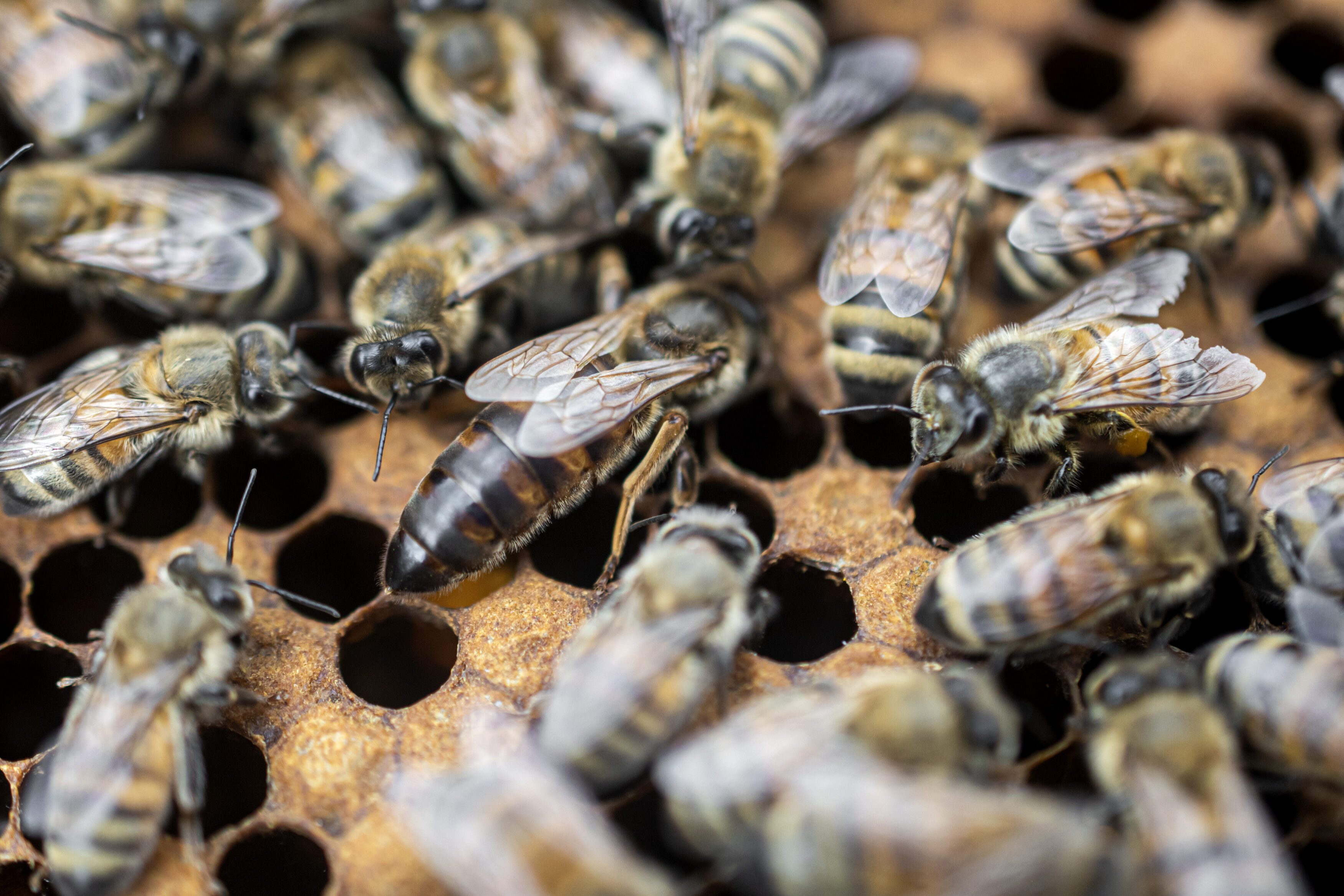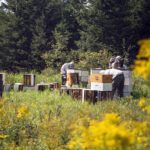Winter on the farm is our season of rest – for both the farmers and the bees. It’s a quieter time of the year for us, but still a very important season on the farm. Ensuring the bees are healthy going into the winter is crucial for the survival of the hive and we do everything we can to support hive health as the temperatures start to drop.
You might be surprised to know that the lifespan of a bee is only about 6 weeks during the spring and summer months due to their heavy workload. But, during the winter, bees can live for up to 5-6 months. Bees are awake in their hives during the winter months, clustering together to stay warm, and consuming honey to survive.

Cold temperatures or fluctuations in temperature can be extremely hard on the bees. At Honey Fields, all our bees are wintered indoors in large barns. This allows us to keep their temperature steady and even, so they aren’t affected by extremes in winter weather. Our barns are kept dark, so the bees don’t come out of their hives and fly, and we keep the temperature at an even 6 degrees all winter long. This means they don’t have to use as much energy trying to keep themselves warm when the temperatures drop outside.
In order to stay warm, bees crowd tightly together to form a cluster, with the queen bee in the middle. The worker bees shiver and shake in the cluster to create heat. Bees can generate enough heat to keep the centre of their cluster, the warmest part, up to 35 degrees Celsius, while the outer part of the cluster is closer 10 degrees Celsius.
The bees are moved indoors in December and we move them back outside again in March when the warmer spring weather arrives. But for now, their job is to keep warm and dream of sunny days ahead.




